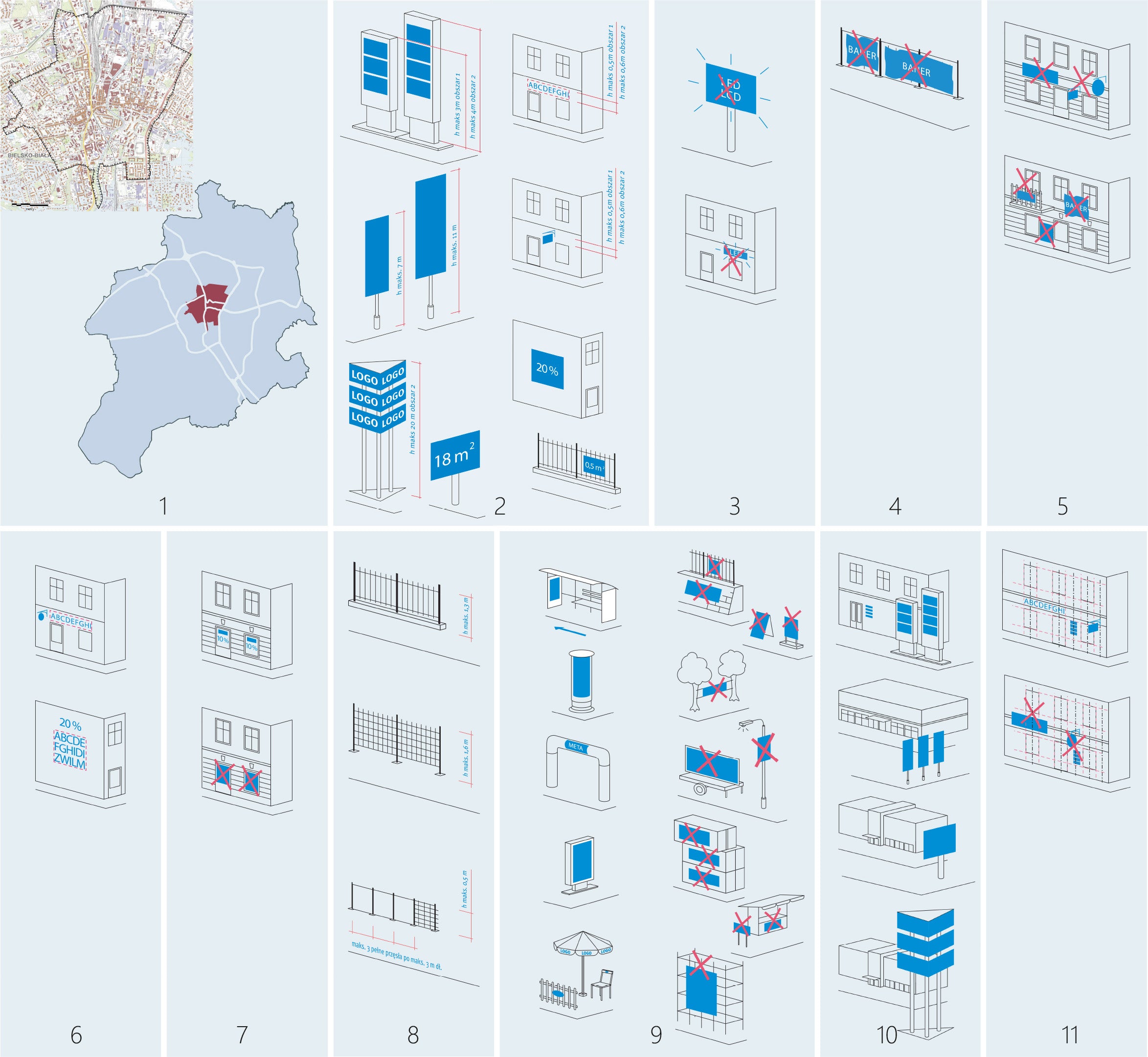Advertising Resolution
Krzysztof Gieleciak

ADVERTISING RESOLUTION
The adoption of the Advertising Resolution by the Bielsko-Biała City Council on 2 February 2023 preceded the adoption of the Landscape Act by the Sejm of the Republic of Poland on 24 April 2015.
The full title of the resolution, i.e., "Resolution regarding the principles and conditions for siting small-scale architectural objects, advertising boards and advertising devices as well as fences, their dimensions, quality standards and types of building materials from which they can be made", defines the intentions of the authors of the Resolution regarding the shaping of spatial order, landscape protection and the determination of the City Council to improve the image of the city.
The adoption of the Resolution was a response by the city authorities to the commonly perceived informational and aesthetic chaos in the public space. It resulted from the lack of legal tools enabling the services established for this purpose to take effective action against the authors of arbitrary advertising.
The provisions contained in the resolution, in addition to the provisions of the Building Law, constitute the basis for administrative proceedings conducted by the Department of Urban Planning and Architecture of the City Hall.
The final effect of administrative proceedings are permits for the placement of advertising boards and devices, small-scale architectural objects and fences.
IN ORDER TO ACHIEVE THE DESIRED EFFECT IN PRACTICE, THE FOLLOWING PROVISIONS WERE INTRODUCED IN THE IMPLEMENTATION OF THE RESOLUTION:
1. The city area was divided into two areas.
Area 1 includes the historic city centre and the rest of it constitutes area two.
The rules for siting advertising boards and devices have been differentiated depending on the location.
2. Limits on the size of advertising space have been introduced. Standardization of advertising media.
3. For the sake of safety on roads and street intersections
a ban on placing LED LCD light screens displaying variable and moving images was introduced.
Picture……,
4. A ban on placing banners on fences has been introduced,
5. In order to improve the exposure of historic building facades, a ban on covering details of architectural decoration on building facades has been introduced.
6. In order to improve the aesthetics of signs
an order was introduced to make signs in the form of 3D letters or painted on the gable walls of buildings.
7. In order to improve the aesthetics of shop windows, the possibility of pasting over the surface of shop windows has been limited.
8. Standardization of fences.
The boundary dimensions were introduced and the applicable fence types were selected.
9. Standardization of small architectural objects.
A unified colour scheme has been introduced for café umbrellas and bus stop shelters.
10. Significant restrictions have been introduced regarding advertising boards and devices located within the city, making their size, type and quantity dependent on the development area of buildings in which service, commercial or production activities are conducted.
11. Advertising boards and devices may only be placed at the place of business.
ADVERTISING RESOLUTION
Siting advertising masts.
One of the preferred methods of displaying advertising content and information about cultural events in the resolution is the use of flagpoles.
According to the authors of the Advertising Resolution, the main advantage of using masts as carriers is the possibility of quick assembly and dismantling of advertising surfaces after the event.
As a result, outside designated periods, free-standing masts without flags constitute minimal interference with the city's public space.
